Pets
Pet Supplies Plus Vet Clinic Provides Comprehensive Services
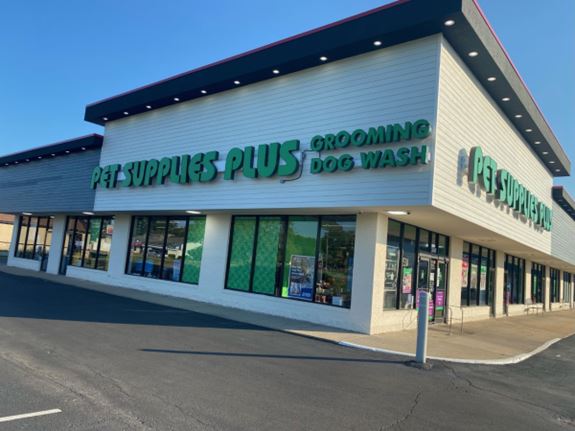
In order to better serve its customers, Pet Supplies Plus Vet Clinic has developed a veterinary facility within Pet Supplies Plus. Wellness and preventative care are provided through the VIP Pet Care program, which is a cost-effective, reliable and high-quality option for pet owners.
Franchised pet business Pet Supplies Plus Vet Clinic caters to canine and feline owners in addition to those who keep small animals such rabbits and mice, reptiles, birds and fish in aviaries. There are several Pet Supplies Plus locations throughout North America, including as Maine, Pennsylvania, Michigan, Ohio, Illinois, Iowa, Kansas Texas and Florida. The local community and the management style of each shop contribute to their unique reputations.
Reviews of Pet Supplies Plus Vet Clinic locations and experiences with customer service are always favorable. There are some complaints, as with any business, and they tend to focus on the quality of the grooming services and the friendliness of the younger members of the team. Pet Supplies Plus is rated somewhat higher than Pet smart based on feedback from actual customers.
Pet Supplies Plus Vet Clinic plus received generally positive feedback from customers, who praised the store’s wide variety of offerings and helpful staff. Several customers have voiced their displeasure with the service they received and it seems that this is more prevalent in establishments where the majority of employees are inexperienced young people.
Pet Supplies Coupons
You can now save money and shop more responsibly with the most recent Pet Supplies Plus Coupon codes that we have posted. Shoppers may now save a ton of money at the most well-liked Fashion and Clothing business with next to no work required on their part. People keep coming back to our discount site every day because of the wide variety of buy one get one free and other deals we provide. The best offers available at this online business have been featured here throughout the year. You can count on us to help you save costs significantly. You can refer to Pet Supplies Plus $10 Off Coupon 2023 & 15% OFF $60 to save money more.
Pets plus Locations and Times
Customers may easily fit their pet supply shopping around their work schedules, thanks to Pet Supplies Plus Vet Clinic extended store hours. The following holidays will result in Pet Supplies Plus being closed. Sunday after Easter we give thanks Holiday Season Changes to regular business hours may occur on the following holidays tonight is Christmas Eve, Christmas Eve and The First Day of the New Year.
Provide the Standard Treatment
At Pet Supplies Plus Vet Clinic you may choose between two different grooming services. Expert groomers may provide the standard treatment, or pet owners can utilize an in-store grooming station to give their animal a bath on their own. The final cost will depend on the kind of service you choose, the size of your dog, and any optional extras. A standard bath involves a wash with shampoo, ear cleansing, nail clipping and blow-dry. A haircut and a shower may be done at the same appointment.
Provide Premium Pet Services Require
As the third biggest pet specialty shop in the United States, Pet Supplies Plus Vet Clinic provides comprehensive services for your pet. They provide everything your pet may possibly require, as well as a staff that knows everything about animals to make sure that you don’t have to go anywhere else.
The Firm Has wide Locations
In addition to its headquarters in Michigan, the firm also has locations in Ohio, Illinois, Pennsylvania, Indiana, New York, New Jersey, Connecticut, Massachusetts, California, Maryland and Rhode Island for a total of approximately 560 shops in 36 states. The stores range in size from 8,000 to 12,000 square feet and may be found in close proximity to other pet supply retailers.
Priced Competitive and Represent Good Value
Pricing for small breeds ranges from $25 to $35, depending on whether or not the procedure includes a haircut. Prices range from $30 to $50 for a medium-sized breed, $60 to $80 for a big, and $100 or more for a monster. Prices at Pet Supplies Plus Vet Clinic are less than those of its rivals. Although the company’s offerings are not inexpensive, they are price competitively and represent good value. The firm maintains a website which is a comprehensive resource for learning more about the business and the items it sells.
Provide a Large Variety of Items
Whether or whether customers feel like they are receiving a good bargain is more important to them than the actual price. The most effective strategy for doing so is to provide a large variety of items at competitive rates, make it simple for customers to compare those products, and provide helpful customer service. Medical facility for animals Simple procedures to complete. But you may still run a successful veterinary practice as the owner or manager without any formal training in the field.
Insurance and Veterinary Care
If an animal suffers harm or death due to a professional’s carelessness, the victim’s family may file a malpractice complaint in most US jurisdictions. In most cases, the fine will not exceed the worth of the animal. That’s why vets can get malpractice insurance for little under $500 year, whereas human doctors pay closer to $15,000 annually. Veterinary malpractice insurance and veterinary care costs may go up because some states include punitive damages, loss of companionship and suffering as part of the judgment.
Relevant Considerations
Opening a Pet Supplies Plus Vet Clinic requires careful consideration of several factors. If you’re determine on the concept, whether you’ll be working out of your house or a rented space, take the time to plan well so that your practice grows. A good example is the impending opening of The Southwest Veterinary Clinic in Richmond’s southwest. Every conceivable medical treatment for pets will be available at this facility.
Success in the Pet Industry
There are 15,890 pet and supply businesses in the United States, with 7,945 of them being single proprietorships. The profits from a pet shop may be substantial. The average weekly sales per employee in the retail pet-products industry is $2,600, or $135,200 year, as reported by the American Pet Supplies Plus Vet Clinic Products Manufacturers Association. Get money off with $10 Petco Coupon, Petco Grooming Coupon 20% Off and other Petco promo codes this month. Access today top’s deals and save instantly
Dog Breeds
The Brussels Griffon An adorable breed.
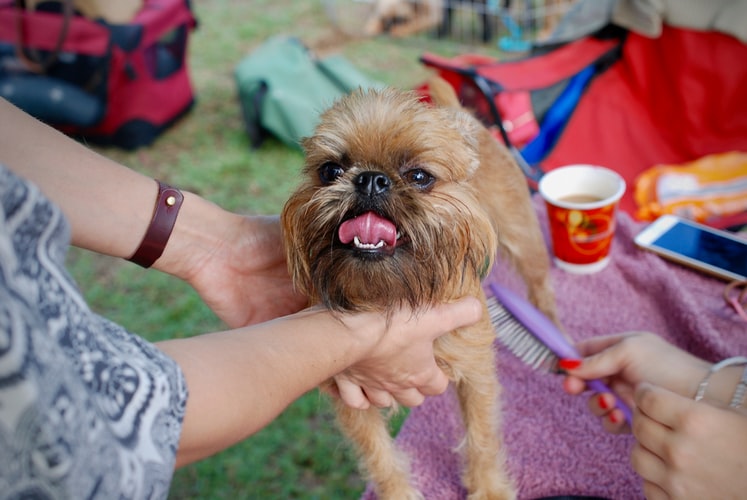
Intelligent, affectionate, loyal, curious … These are just some of the virtues that the Griffon of Brussels gives us. Definitely, this breed falls in love.
About ten years ago, seeing an Ewok walking by my side was the strangest thing.
I remember the people who were walking down the street at that time, stopping and hearing the children exclaim: Look, Dad! That dog has a beard !!
Fortunately, every day the Brussels Griffon is better known in Spain. An example of this is that a chain of stores in Spain has made a television spot in which a griffon appeared waiting in the arms of its owner, while the Star Wars soundtrack was playing off.
The Brussels Griffon is a small breed dog that usually weighs about 3 to 6 kg and, yes, it does look a lot like the Ewoks that appear in the Star Wars movie.
To find out more about its history: its origins date back to the 19th century in Belgium. These dogs were used to scare away rats that roamed in stables in Europe. In addition, they helped guard the house and kept its owners company.
This breed usually attracts a lot of attention for its monkey face. They have a very peculiar little face, with a flat nose (they are brachycephalic), ears attentive to everything and round little eyes that speak to us.
There are three varieties depending on the type of hair the specimen has: The Brussels Griffon, which has long, hard and red hair; the Belgian Griffon, with long, hard, black hair and, finally, the Petit Brabançon with short, reddish hair.
Obviously, the one that gives the least hairdressing work is the Petite Brabançon, for having short hair. On the contrary, the Brussels griffon and the Belgian griffon have to have their hair worked every few days using the stripping technique.
According to the FCI standard, the head must be large, broad and round, with a very short muzzle, a very marked stop and a black nose. The eyes are large, round and dark. Small ears are rewarded. The tail should not curl up, it should be set high and generally carried raised. Griffons have a prominent lower jaw (prognathism), but they should never show their teeth or tongue when they have their mouths closed, as this is considered a breed defect.
This breed has some care that should be noted. We must take good care of our eyes . As they are quite bulging, they are very prone to ulcers, so we must carefully monitor the ocular structure and check that they do not have transparent white spots, which can be a symptom of an ulcer. If our griffon suffers from an ulcer, it is very important to go to the vet as soon as possible so that it does not deepen, reaches the cornea and the damage caused may be greater.
Also, we must ensure that hairs are not accidentally introduced into the eye, since permanent contact can damage the eye cells and lead to keratitis or distichiasis (abnormal birth outside the usual lash line and rubbing them with the cornea).
Another important aspect to note is that the Brussels Griffon is quite delicate when it comes to heat stroke. Like all brachycephalic breeds, we must pay special attention in summer so that our pet does not suffer the dreaded heat stroke.
Regarding their character, it is important to note that they tend to suffer from separation anxiety, so those who are considering having a griffon should make sure that they are not going to leave their pet alone for a long time. They love company and pampering. Sometimes they can be fearful in front of young children. This, as always, will depend on how we train our dog. They can be scared by the noises, unexpected movements and games that they give them, but they are very good with them and, at most, what they will do is run to the opposite side. They have a very faithful character, they will not separate from you for a single minute. They will be your shadow.
Dog Breeds
THE GERMAN SHEPHERD AN OBEDIENT DOG
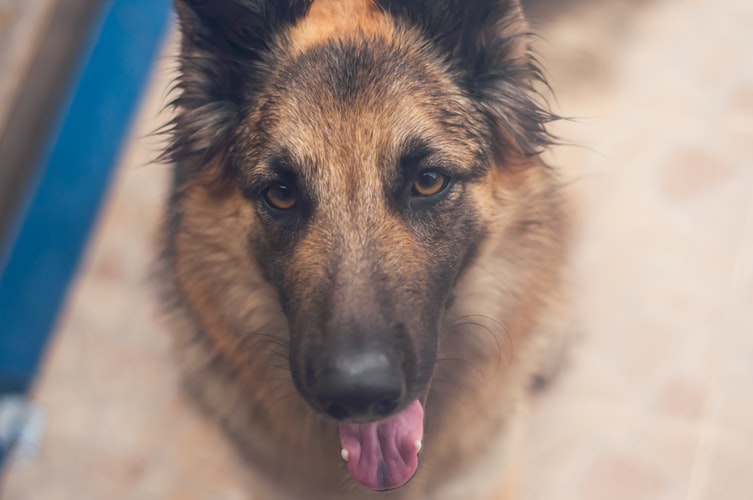
It is perhaps one of the most impressive dogs in the world: the German Shepherd. He is capable of anything because of his incredible intelligence … During the First World War he was used to perform various tasks for the German army. Today his intelligence is fortunately mainly used by owners who want to teach him tricks. Read on and discover everything about this beautiful dog!
Its origin
As you can guess, the German Shepherd comes from Germany, where they call him the Deutscher Schäferhund . Deutscher Schäferhund can be translated as “German Shepherd Dog”. The German Shepherd Dog was created because a soldier was bored while keeping watch . He looked out on a large area of pasture, in which he saw all kinds of different dogs . He was amazed by what these dogs could do. After seeing that these dogs could move a whole flock of sheep , he decided to leave the army and breed this dog breed. Because all the dogs in the pasture were so different, the soldier decided to imagine one type of dog that would be perfect both in appearance and inwardly. By the way, did you know that the first guide dog for the blind was a German Shepherd named Buddy ?
Personality and Behavior
Because the German Shepherd is used as a sheepdog, it is very easy to train . It is of course very important that your dog is obedient when you use it with the sheep. In addition to a good sheepdog, you can also use the German shepherd at home as an alarm system. This dog breed is very territorial and will bark immediately if a burglar enters your home. Due to this territorial behavior, the German Shepherd can also quickly show suspicion when encountering strangers.
The German Shepherd is a very loyal dog. He really loves his owner and will always try to do what you expect from him. Just because he is so affectionate, he is not the best dog to leave home alone all day while you go to work . It’s important to keep this in mind before bringing a German Shepherd into your home.
It is also very important to give your German Shepherd a good upbringing . If you give him a good upbringing, with or without the help of a dog school or an expert experienced with this breed, he will always do what you expect him to do! Please note, a good upbringing does not immediately mean a strict upbringing! Your German Shepherd will learn much faster if you reward him for positive actions than if you yell at him if he does something wrong. If you socialize the German Shepherd at a young age and allow it to interact with other dogs , there is no problem whatsoever. The same goes for other pets such as cats. Also with childrenthey have known all their lives they have no problem. This breed is certainly also suitable as a family dog !
It is a highly intelligent breed that can teach you any trick in no time! For a German shepherd the sky is the limit. Maybe you can teach your dog to urinate on command using the step-by-step plan in this article ? Today, the German Shepherd is still often used as a guide dog for the blind , which shows its good-natured nature. Other jobs that can be perfectly performed by this breed are that of a police dog, tracker dog, or guard dog . For these jobs, the courageous nature of the German Shepherd is really perfect. This dog is really not afraid of anything!
Care and nutrition
The German Shepherd has an undercoat, which allows its coat to tangle more easily than the coat of some other dog breeds. To avoid this, it is best to give your dog a thorough brushing twice a week . At certain times of the year you will notice that your German Shepherd sheds even more than usual. It can be very helpful during these times to give your German Shepherd more brushings than usual so that less hair ends up in your house. In addition, these brushings also help to keep your dog’s coat beautiful and prevent tangles! Do you have no idea exactly how to tame that coat? Then you find here a few tips!
The German Shepherd is a dog that needs a lot of exercise . He loves to take long walks with his owner and if you give him daily, he can also live in a house or apartment without a garden. If you don’t give him this move, your dear dog might get very nervous or let off steam on your furniture. This dog is very sporty , which means that you can also take it with you when you go jogging or going for a bike ride!
What a German Shepherd needs in terms of nutrition varies from dog to dog. It depends on what he does in daily life : is the German Shepherd a police dog or a family dog? If he performs a job as a police or tracking dog, he needs a lot of energy in his diet. When choosing food for your German Shepherd, you must therefore think carefully about the situation with your dog. With this large dog breed, it is also important that obesity is avoided in order to give the hereditary joint disorders as little chance as possible. If you don’t know what to do, don’t hesitate to ask your vet for help! Do you think your German Shepherd might be too fat? Then you find here an article that might help!
Do German Shepherds suffer from health problems?
Like all dog breeds, German Shepherds also have typical ailments linked to the breed. Since it is a very large dog, German Shepherds have regularly suffer from diseases of the joints such as hip and elbow dysplasia . Hypothyroidism is a condition of the thyroid gland in which it works too slowly due to a lack of active thyroid hormone. Von Willebrand ‘s disease is an inherited blood disease that is common in German Shepherds.
It is important to buy your puppy from a good breeder who will perform preventative testing to prevent these hereditary conditions in their puppies. If you have chosen a good breeder and you have your dog regularly preventively checked by your vet , the chance of these typical ailments is immediately much smaller! These small measures also ensure that your German Shepherd can easily reach the average age of 12 !
The appearance
The German Shepherd is a dog with many muscles : its neck, back and loins are very strong and muscular. It has a long tail that has longer hair on the bottom than on the top. The German Shepherd is a large breed of dog. The height at the withers is between 55 and 65 centimeters high. Weight depends on your dog’s gender. Females weigh between 22 and 32 kilograms , while males have 30 to 40 kilograms weigh. A German Shepherd has very dark eyes. His pointed ears are pointed with the auricle facing forward on his head.
The German Shepherd’s coat is black with reddish brown, brown, yellow or even bright gray markings . The German Shepherd’s hair is short on the head, limbs and toes. He has longer hair on the neck and the back of the legs.
How do you choose a German Shepherd puppy?
Are you convinced that such an intelligent dog fits perfectly in your family? Is there usually someone in the house so that this affectionate dog doesn’t sit alone? Do you have enough time to give him his daily exercise? Perfect! Then the German Shepherd might be something for you. Now you can start looking for a good breeder. But how do you know exactly who is a good breeder and who is not? Don’t worry, we’ve created this checklist to help you!
The average price for a German-Shepherd puppy is usually around 850 euros . Always be on the lookout if you come across a seller selling puppies for a much lower price! There is usually a reason for this cheap deal. Is the dog not a full German Shepherd? Do the puppy’s parents have a history of hereditary conditions? Be sure to ask the breeder for the pedigree and the official test results to check such things before buying a dog!
With a German-Shepherd, it is of immense importance to pay attention to the parent animals during your visit to the breeder . Are they anxious or rather social? How do they respond to you as a visitor in their home? The fact is that a German Shepherd can become aggressive if it has not been socialized early enough and has not received training. These dogs are often very nervous too . Does the breeder have several litters in his house at the same time? Then there is a good chance that you are dealing with such dogs. The breeder does not have time to train all puppies at the same time and to learn everything they need to know as a dog.
Usually you can distinguish a good breeder from a bread breeder by the interest they show in you and your family . A good breeder would prefer to know everything about the future family of his puppy, so that he is absolutely sure that you will give a golden home. Some breeders are less concerned with the fate of their animals and are mainly interested in the money he can earn with his puppies. Does a breeder ask you a lot of questions? Then that is certainly a good sign!
Expert Advice
Tips for choosing a suitable bed for your dog
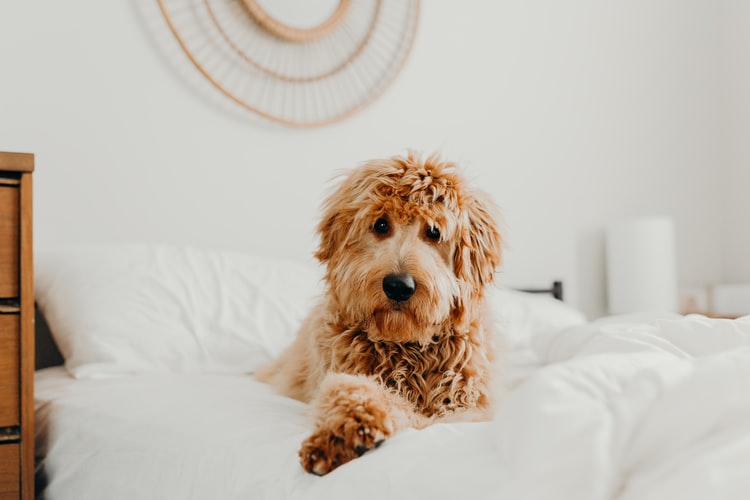
Do you want your little furry friend to sleep great? Well, follow these tips that we bring you.
Do you know what bed your dog needs? Surely not, in fact, you probably don’t even know that choosing a good bed for your pet is essential. We already tell you: it is essential for you to have a good life, to maintain your energy.
You may not know how to choose the bed for your pet. But you do not have to worry , since you are in the most ideal place. Our mission is to help you with this choice so that you make the perfect purchase and that your great friend sleeps soundly every day.
How to choose a good bed for your dog
Choosing a suitable bed for your four-legged companion is very important. Imagine what it is like to sleep in a place where you feel uncomfortable, in a place that does not let you sleep well. How could you face your day to day if there is no way to recharge your batteries?
The same thing happens to animals. For that reason, it is essential that you know how to choose the perfect bed for your pet. And do not worry, here we bring you the fundamental tips so that you can achieve it without having to break your head too much.
The first thing: breed and size of the dog
Without a doubt, the most important factor when buying a suitable bed for dogs. Is your pet going to be really comfortable in this bed? Although we will go into that later, the first thing to make sure of it is that it is suitable for the size, for the weight and, ultimately, for the breed of your pet.
You wouldn’t put a Chihuahua in the same bed as a German Shepherd , much less the other way around. Try to see how much space your dog usually occupies while he is sleeping and take that as a reference when choosing a bed.
Do you sleep in several different postures? Well, try to have them all as a reference so that you can do the same in your bed. The most advisable thing is that you pay special attention to how much it occupies when sleeping with the position in which it stretches the most.
If the bed fits that particular size well, it will fit all the others perfectly and seamlessly. In short, it will be the perfect size for the animal. Make sure you adhere to this point, above all.
Is it really comfortable?
Checked and secured the size well, do not hesitate to review the comfort that the dog bed provides. Generally, something with a good mattress inside is more than enough, even wicker baskets with cushions or molded huts.
You can find practically everything, but the best way to get it right is to see where your pet usually sleeps , as long as it is a comfortable area. You are already in the habit and will therefore miss sleeping on something with a different harshness.
Keep this in mind and choose something that is similar in size, shape, texture and, of course, type of material. It should be fluffy, as this is how you really ensure that the pet is truly comfortable and can sleep peacefully.
Easy to clean materials
Although the main thing is that the animal feels comfortable, it is also very important that the bed is easy to clean. It is very likely that it will stain, and if the bed is stained, your pet will also stain. And that, we already anticipate, will bring numerous problems.
So look for a dog bed that has waterproof mattresses , which will make cleaning much easier later. Besides that, do not have too many nooks and crannies that complicate the task later.
If, in addition, the materials are insulating, better than better. The dog will not get cold or additional heat because of the bed, while it will not stain so easily and will allow you to handle it as easily as possible.
What if I look for a bed for a puppy?
With puppy beds many problems often arise, because you do not directly know where to start. Should they have their own bed? Should they buy something designed for their small size, if they are to grow?
The truth is that the answer is a resounding yes to both questions. The dog must have a resting place designed by and for him since he is little . So you know that this is your place and that your sleeping conditions are different from those of people.
On the other hand, it is common for puppy beds to have supports on the sides so that they feel safer and can sleep more peacefully. When they have such a short time to live, they tend to be more fearful, and anything that generates more sense of security is welcome.
It can be a bit problematic, because you have to change the bed every so often because there are breeds that do not stop growing, but it is the best solution , the most comfortable for the animal and the safest too.
Don’t hesitate to make a good investment in this regard. Your best friend will appreciate it like few others, and will be able to live much healthier thanks to having a good rest. Sorry, the best rest.
It is not difficult at all to choose the right bed for your dog, but you do need to invest some time and, above all, control the size of the animal and the area where it will sleep. Remember all the guidelines that we have given you, because they will be of great help to you.
In the end, the one who will appreciate it most will undoubtedly be your pet. She will sleep better and you will be able to enjoy her company much more , as she does yours.
-

 Apps1 year ago
Apps1 year agoWhy is Everyone Talking About Hindi Keyboards?
-

 Social Media1 year ago
Social Media1 year agoWho is Rouba Saadeh?
-

 Apps1 year ago
Apps1 year agoThings you need to know about Marathi keyboard today
-

 Apps1 year ago
Apps1 year agoStuck with Your default Bangla keyboard? Isn’t it time for a change?
-
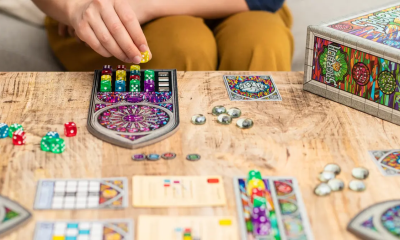
 Games1 year ago
Games1 year agoTop 7 Popular Puzzle and Card Games for Relaxing Your Brain on Mobile, Featuring Solitaire
-

 Social Media1 year ago
Social Media1 year agoMati Marroni Instagram Wiki (Model’s Age, Net Worth, Body Measurements, Marriage)
-

 Entertainment1 year ago
Entertainment1 year ago12 Online Streaming Sites that Serve as Best Alternatives to CouchTuner
-

 Entertainment1 year ago
Entertainment1 year agoMovierulz Website: Movierulzz 2021 Latest Movies on Movierulz.com
